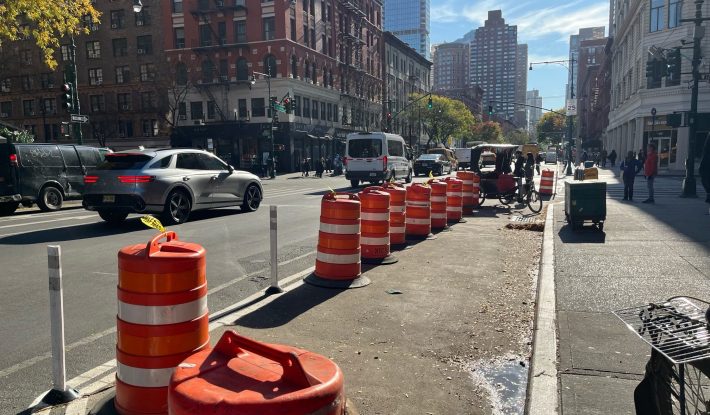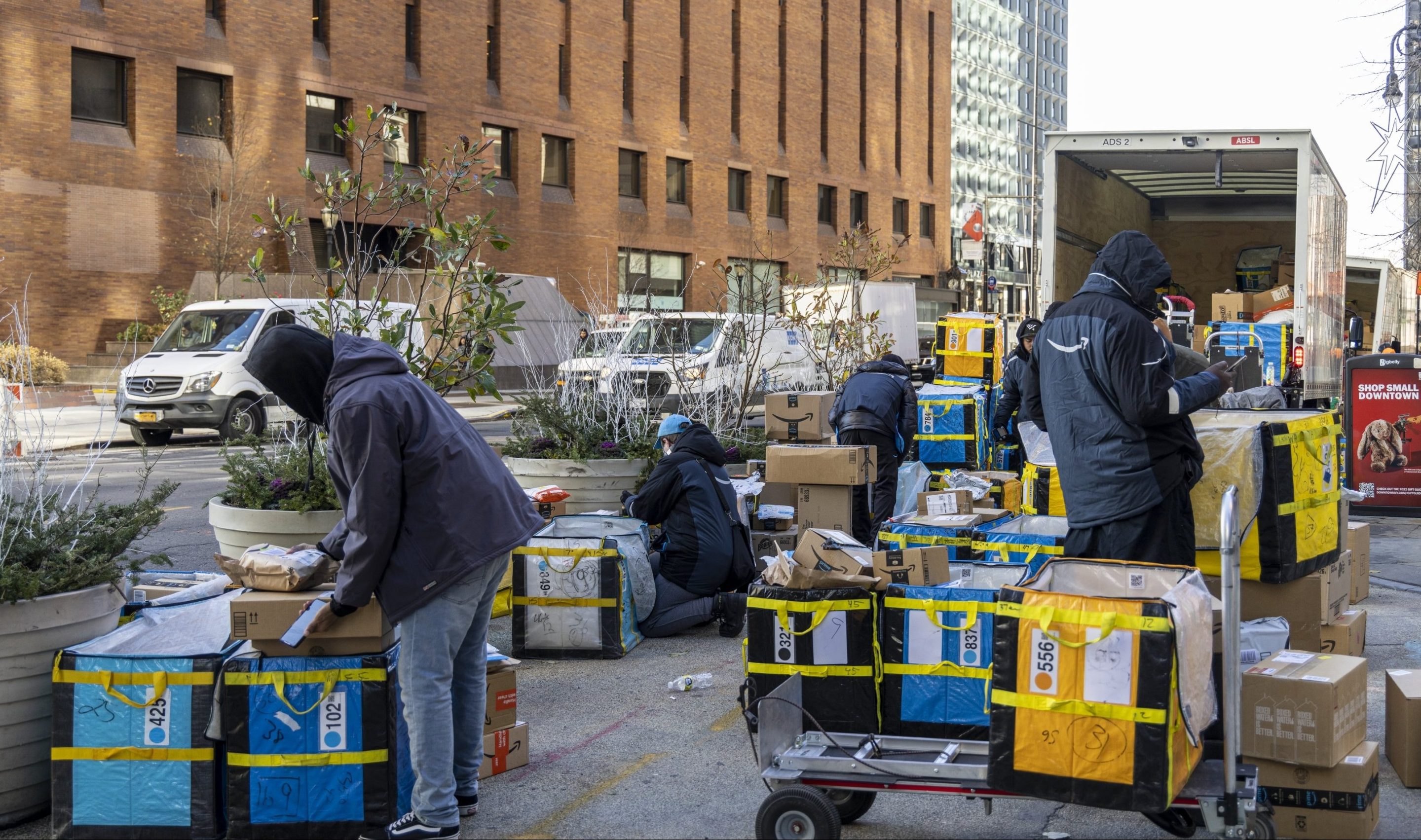A city-hyped program to improve safety and reduce delivery congestion on the Upper West Side by converting free car storage into more metered parking and creating dedicated package staging areas is moving slowly and will leave much free "parking" untouched.
According to an update released on Monday, the Department of Transportation revealed that the proposed "microhubs" have been pushed off until next year — and many of the proposed metered parking spaces won't come from the neighborhood's wealth of free spaces.

The agency in June had proposed to create about 200 "new" metered spots, while removing a total of 175 currently free spaces — a mere one-tenth of the estimated 1,700 spots in the 14-block pilot area. This week's press release left out how many free spots would become paid, and also said there would be no micro-hubs until next year, instead of this fall, as originally promised.
What's new?
Many of the "new" metered spots are actually just DOT changing regulations on existing paid spots, and one local advocate said the whole point of the pilot was to test the idea of charging for the valuable real estate that is the Manhattan curb on a larger scale.
"They chose this constrained pilot area so they could make changes at scale," said Carl Mahaney director of StreetopiaUWS (which shares a parent company with Streetsblog). "We’ve been super eager to see these changes, see what their impact is and start measuring and observing, so it’s a little disappointing."
This year, DOT will adjust "existing metered spaces" currently for passenger vehicles along Columbus Avenue and reserve 100 spaces for commercial vehicles during the day. More of these "new" commercial metered parking will come to Broadway and Amsterdam Avenue next year as well, according to agency spokesperson Vin Barone.
The agency will also convert a total of about 200 currently free parking into paid metered spaces for passenger vehicles, but 120 of paid passenger parking elsewhere in the neighborhood will become commercial-only. These 80 "net new" metered parking spots are slated to come online sometime next year, according to DOT spokesperson Mona Bruno.
In addition to metered spots, the 175 fewer total car storage spots in the neighborhood will include making way for 27 new loading zones, 30 bike racks and a street seat later this year.
Six new truck loading zones will also turn into metered parking for passenger vehicles in the evening this year, before reverting to being free again overnight.
The agency's presentation from four months ago simply listed the proposals as 120 "new" commercial metered parking spots and 80 "net new" paid parking spaces for passenger vehicles, without the caveat that the agency would lean on reassigning existing paid parking for a substantial chunk rather than just removing free spaces.
Requiring drivers to pay for more spots in a neighborhood where 97 percent of parking is free would allow the city to gauge how many motorists actually need to park, while generating more money for the city to improve its streetscape, Mahaney said.
"It was one of the most ambitious parts of their plan, where they were actually taking this free curb space and saying it has a value," he said. "It was at a scale that seemed appropriate to the ambitions of the pilot."
Micro steps
The DOT was also set to launch at least one of three microhubs in the uptown area before the winter. The hubs aim to reduce illegal parking by delivery drivers in the street by providing designated zones along the curb or off-street.
DOT has plans to install more of the hubs on the Upper East Side's First Avenue, between E. 89th and E. 90th streets, along with two later this year under the Brooklyn-Queens Expressway in Clinton Hill and Greenpoint.
The agency blamed the setback on falling to wrap up new regulations for the microhubs, which were mandated by a Council law that passed at the end of 2021.

The DOT's pilot had already come under scrutiny by experts for not going far enough when it first came out four months ago.
Parking guru Donald Shoup at the time urged Big Apple officials to divert revenue from new meters directly back into the neighborhood as an incentive — creating so-called parking benefit districts — but DOT officials did not include the policy.
The parking revenue could go toward free transit passes, street cleaning, or new greenery, Shoup argued at the time.
Parking meter revenue must legally go into a general fund for the whole city, DOT spokesman Vin Barone previously told Streetsblog, while implying that diverting that money back to the Upper West Side would be unfair to the rest of the city that isn't part of the pilot program.
Shoup questioned that criticism, noting that there are 18 residents for every parking spot in the neighborhood, and only a minority of residents with cars – who tend to be better off than their non-driving neighbors — can avail of these spaces.
"Is that fair to the majority of residents who don’t own cars and who have lower incomes than residents who do own cars," Shoup told Streetsblog in an email. "Charging market prices for the now free curb parking would eliminate all the traffic caused by cars cruising for parking. Would DOT oppose that?"
The expert suggested diverting only some of the new meter revenue to local upgrades, so the general fund would still receive more money than it currently does.
The agency was more receptive to the idea on a recent episode of its podcast, where Shoup was a guest, and he drove home the need to couple paid parking with local benefits.
"If money goes into a parking meter, it goes out the other side, it cleans the sidewalk, or plants street trees, or removes graffiti every night," Shoup said. "When people can see the benefits of charging for parking they’re more eager to have parking meters."
The direct redistribution of revenue from cars to people could also help politicians who get cold feet when confronted by drivers, who often dominate community meetings on street redesigns.
"The drivers can take over a community meeting about curb parking, and it will make a politician think that it’s a quick way to commit political suicide, is to recommend prices for curb parking," he told DOT. "But if you say that the money will stay in the neighborhood, then people look at it differently."
Editor's note: This story was updated with new information provided after initial publication from DOT.






